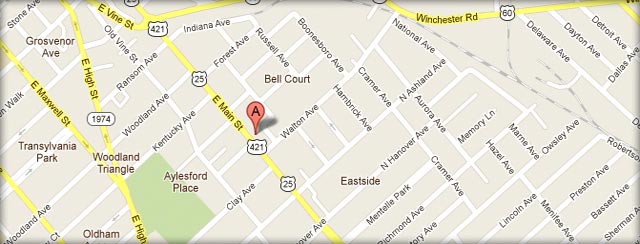- ATV accidents
- Brain Injuries
- Bus Accident
- Car Accidents
- Construction Accident
- Distracted Driving
- Drugged Driving Accident
- DUI
- Firm News
- Mass Tort
- Medical Malpractice
- Motorcycle Accidents
- Pedestrian Accidents
- Personal Injury
- Product Liability
- Safety
- Social Security Disability
- Truck Accidents
- Vehicle Accidents
- Workers Compensation
- Workplace Injuries

One of the biggest milestones in a teenager’s life is getting a driver’s license. A license means independence and freedom from the tedious ties to a carpool or school bus. But with that newfound liberty comes an obligation to be safe on the roads – and unfortunately, some teens are not always good judges of their abilities when it comes to driving safely.
A look at the statistics involving teen driving helps illuminate the scope of the problem, both nationally and in Kentucky. Automobile accidents are the leading cause of death among U.S. teenagers between the ages of 14 and 18, according to a statement just released by the National Highway Traffic Safety Administration. In 2011, more than 2,000 teens were involved in fatal crashes on U.S. roadways, and 45 percent of them died as a result of their injuries.
The data from Kentucky is also tragic. More than 20,000 teenage drivers were involved in collisions in 2012, according to state police reports. Although most of the accidents resulted in property damage only, 74 teens died and 4,057 suffered injuries in the crashes. Perhaps even more sobering, 337 teenage drivers in Kentucky were in crashes in which alcohol played a role.
What Parents Can Do
It’s a safe bet that every parent will say that today’s teen accident statistics are unacceptable. What is less certain is whether parents will talk to their teens about the hazards of the road and importance of not taking their responsibilities lightly. That’s why NHTSA is encouraging parents to educate their children about safe driving during a new “5 to Drive” teen safety campaign.
If you are a parent and aren’t sure how to talk to your child about safe driving, you’re not alone. If there’s one thing that young drivers value, it’s their independence. You are rightfully concerned that a safe driving talk could come across as a lecture – and thus fall on deaf teenage ears.
NHTSA has proposed one option to help parents through the 5 to Drive initiative: Take a week and sit down each day to talk to your child about one driving safety topic. There are many to choose from, but some suggested topics include:
- No cell phone use or texting while driving
- No extra passengers
- No speeding
- No alcohol or drugs
- No driving or riding without a seat belt
- The power of peer pressure
Another idea is to come up with a parent-teen driving safety contract. That’s an agreement that is signed by you and your teenager about expectations on the road and consequences for violations. An agreement can establish ground rules so that you don’t find yourself following your teen to the front door shouting reminders – and hopefully, not receiving a phone call that a serious accident has happened.
Be Mindful of What You Say
Parents should also be careful about the way they talk to their teens when it comes to driving, not only when teaching them but also if a car accident actually happens. Flaura Winston, scientific director of the Children’s Hospital of Philadelphia’s Center for Injury Research and Prevention, recently wrote that many parents misinterpret their child’s driving mistakes as intentional behavior rather than accidental. Establishing a trusting relationship may help ensure that your child is ready to listen and learn rather than become defensive and less attentive to your instructions.
Of course, parents also need to be good role models. If you are texting behind the wheel while taking the kids to the mall, how can you expect your child to abide by your rules? It might be worthwhile to establish your own consequences if your kids catch you doing something unsafe while you’re on the road. It could be as simple as giving them a quarter for every error you make.
As your children move on to the world of young adulthood, your guidance is more important than ever – especially when it comes to teen driving. Help your children become skilled drivers and set examples for their peers so that they don’t become another devastating statistic.

